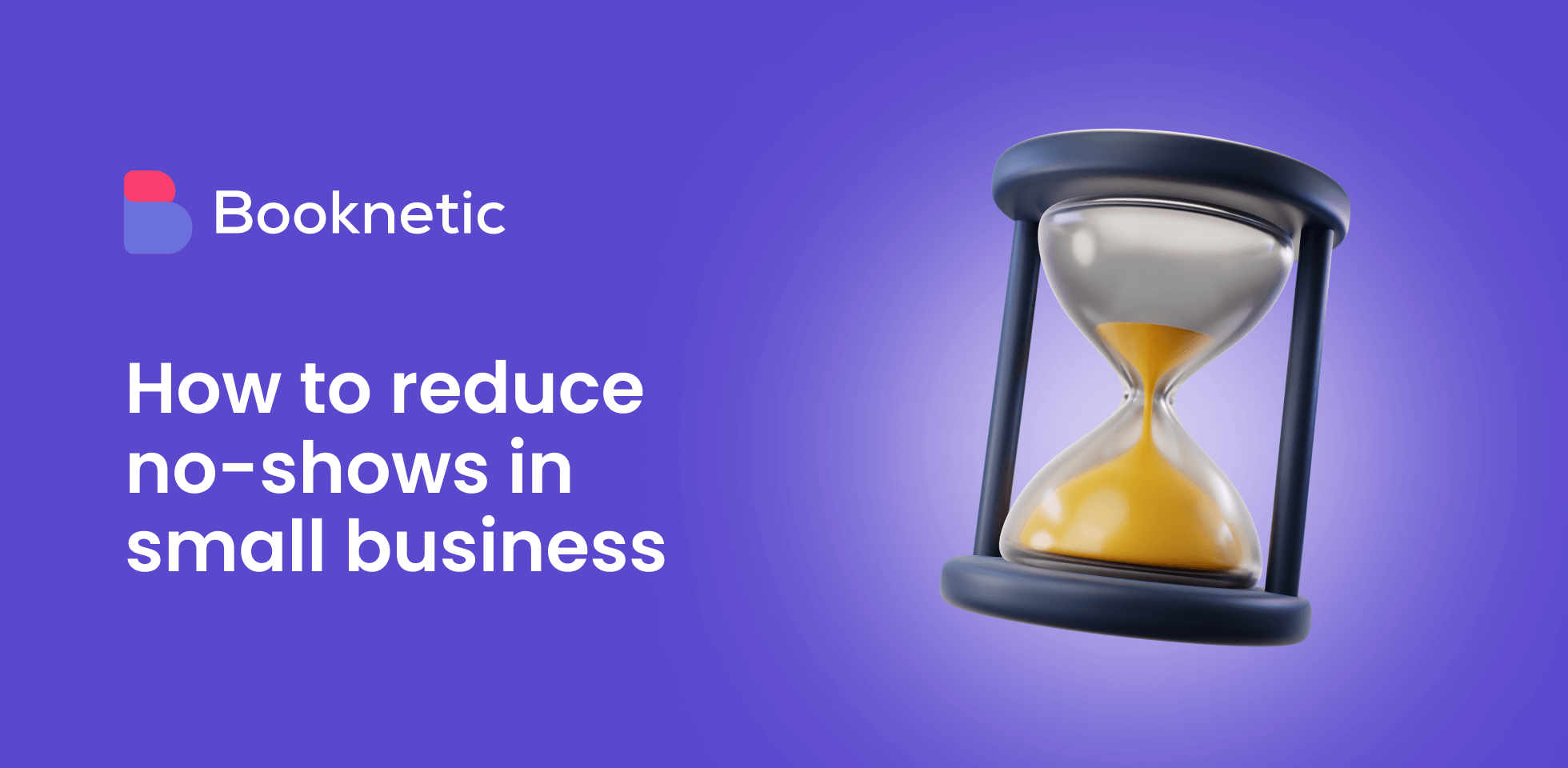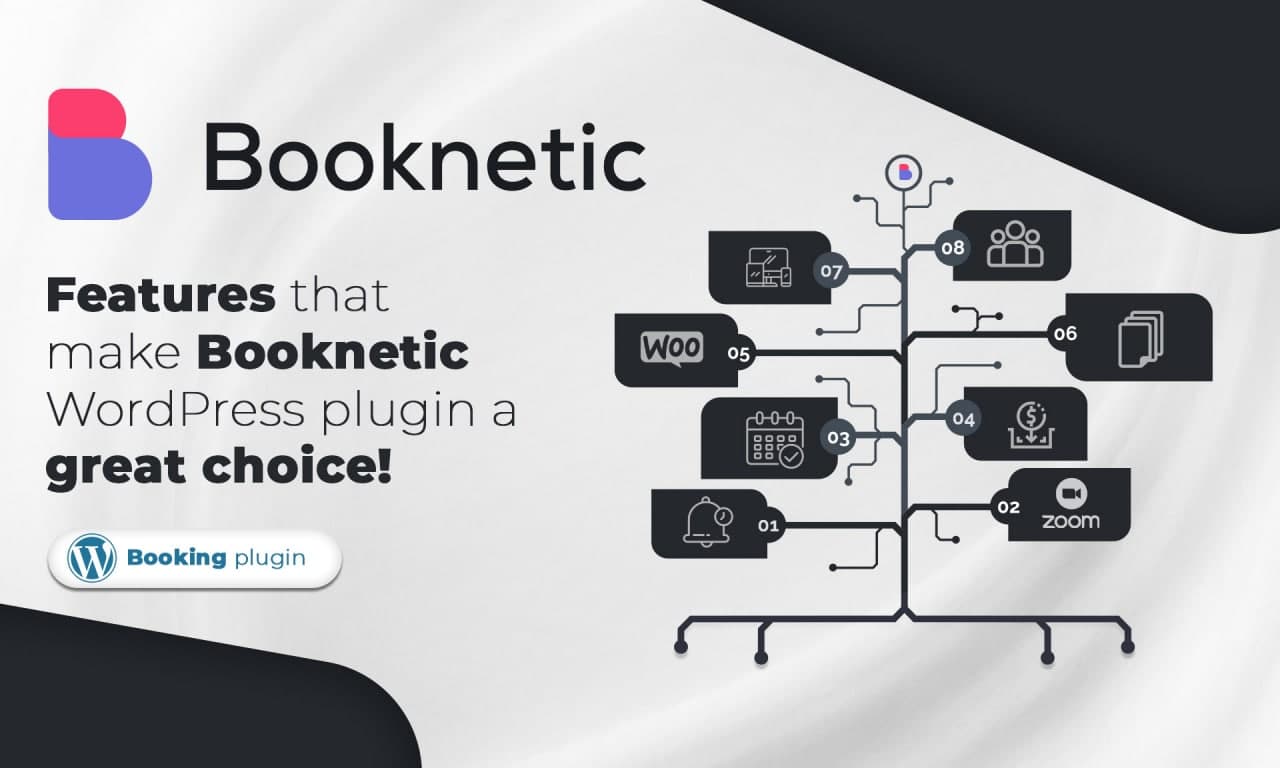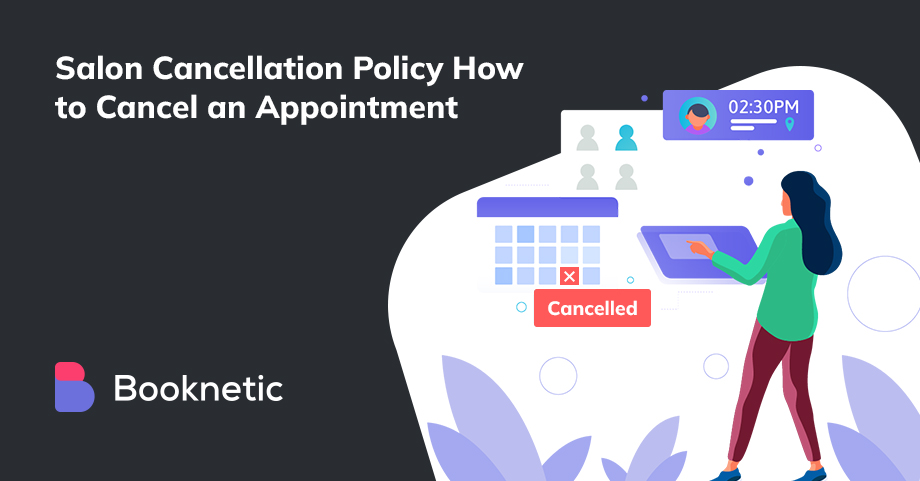No-shows can be a significant challenge for small businesses, particularly those that rely on scheduled appointments or bookings. Each missed appointment leads to a loss of potential revenue and disrupts the business's workflow. For small businesses with limited resources, even a few no-shows can have a substantial impact on profitability.
That’s why we created this documentation to guide you through several actionable steps you can implement to reduce no-shows in your appointments.
Let’s dive in.
Implement Appointment Reminders
Appointment reminders are highly effective in reducing no-show rates. Studies have shown that automated reminders, whether through email, SMS, or phone calls, can reduce no-show rates by up to 50%. Reminders help keep the appointment top of mind for the customer and provide them with an easy way to confirm, reschedule, or cancel if necessary.
The effectiveness of reminder types can vary depending on the nature of the business and its customer base:
SMS reminders are often the most effective in reducing no-shows due to their high open rates (over 90%) and immediacy. They are particularly useful for businesses like medical practices, coaching services or salons where appointments are typically booked well in advance.
Email reminders work well for businesses whose clients are more likely to check their email frequently, such as consulting services or B2B enterprises.
Phone call reminders can be more personal and may be effective for businesses where a strong personal relationship is key, such as in coaching or high-end services.
Frequency of appointment reminders
A common practice is to send an initial reminder a week before the appointment. If your business operates on a thinner timeframe, this can go down to 1-2 days.
A follow-up reminder can then be sent 24-48 hours before the scheduled time. This approach gives customers enough time to adjust their schedules if needed and ensures the appointment remains top of mind.
Pro tip: Send another follow-up reminder to get direct feedback and increase the chances of booking again.
Here is what you should do when sending an appointment reminder:
Keep the message concise and clear, providing essential details such as the appointment time, date, and location.
Include a call to action (e.g., "Reply YES to confirm, NO to reschedule").
Personalize the message with the customer's name to make it feel more engaging and relevant.
Provide contact information in case the customer needs to reschedule or has questions.
Use online booking systems
Online booking systems can significantly reduce no-shows by providing customers with greater control and convenience over their appointments. These systems allow customers to easily schedule, reschedule, or cancel appointments at their convenience.
Moreover, online booking systems often come with built-in features like automated reminders and calendar integrations, which help keep appointments top of mind for customers.
A good online booking system should include several key features to effectively minimize no-shows like automated reminders, cozy rescheduling and appointment cancellation options.
Additionally, it should integrate with calendar apps such as Google Calendar and Outlook to make it easy for customers to connect. The solution should come with a user-friendly interface that makes booking and managing appointments straightforward and intuitive.
Last, but not least, real-time availability updates should also be included so customers can see available slots and make appointments based on their schedules.
Benefits of integrating online booking systems
When a customer books an appointment, it is automatically added to their personal calendar with an online booking system which in turn reduces the chances of double-booking or forgetting and not showing up to the appointment.
Customers receive alerts directly from their calendar apps, which are often linked to their mobile devices, increasing the likelihood they’ll remember their appointment.
This integration simplifies the process for customers, making it easy to manage their schedules and appointments in one place.
If you want to use a comprehensive tool to integrate all your scheduling needs in one place, look no other place than Booknetic. With its comprehensive set of features and top-tier support, Booknetic is your go to online booking system to reduce no shows.
Adopt a flexible cancellation/rescheduling policy
A flexible cancellation policy is crucial because it provides customers with the freedom to cancel or reschedule their appointments without feeling penalized or constrained.
When customers know they can easily adjust their bookings, they are less likely to skip appointments without notifying the business. A flexible policy encourages open communication and allows businesses to fill canceled slots with other customers, which means more $ for the business and more $ for the employees.
To create the perfect cancellation policy , you should provide a clear set of guidelines to describe when a customer can cancel without a fee and when they can’t. Here are some other policy points you should focus on:
Multiple options for canceling or rescheduling (e.g., through phone, email, or online booking systems) to make it easy for customers.
Exceptions for emergencies or unforeseen circumstances to accommodate customers who might need last-minute changes.
Communication of potential fees or penalties for last-minute cancellations, balanced with understanding and flexibility.
Implementing an appointment cancellation policy as a business
When you, as a business owner need to communicate the cancellation policy, you should pay attention to the user experience. Are they able to see the cancellation policy when they book an appointment with you? Do they get a brief information about cancellations in the confirmation email ? Is your cancellation policy easily accessible on the web? Is it easy to understand and free from legal jargon?
When you find the answers to these questions and fix the problems, you get an A+ cancellation policy communication with your customers. Then, even if your policy is not so flexible, you can get every right to exercise your policy and get a reduced amount of no-shows as a result.
Benefits of rescheduling over cancellation
For one, cancellation means a lost customer, while rescheduling shows there is still a transaction between you and the customer that might go through.
Allowing customers to reschedule rather than cancel offers several benefits:
Maintains customer engagement: Rescheduling keeps the customer committed to visiting the business, which is better than losing the appointment altogether.
Reduces revenue loss: While a cancellation results in an empty slot, a rescheduled appointment means the slot is still filled, albeit at a different time.
Enhances customer satisfaction: Offering a rescheduling option shows flexibility and consideration for the customer's changing needs, fostering loyalty and satisfaction.
How to balance flexibility with accountability in their cancellation policies?
Businesses can balance flexibility with accountability by:
Implementing a tiered policy where the amount of flexibility depends on the notice provided (e.g., full refund for cancellations with 48 hours' notice, partial refund for 24 hours' notice).
Charging a nominal fee for last-minute cancellations to encourage commitment while still offering flexibility.
Offering incentives for rescheduling instead of canceling, such as small discounts or loyalty points.
Offer incentives to show-up
Incentives create a positive reinforcement loop that encourages customers to keep their appointments. They also serve as a gentle reminder of the benefits customers receive when they maintain their commitment, making them less likely to miss appointments without notice.
The most effective types of incentives depend on the nature of the business and its customer base. Common examples include:
Discounts on future services: Offering a percentage off their next appointment can entice customers to show up for their current one.
Loyalty points: Implementing a loyalty program where customers earn points for each appointment attended can foster repeat visits.
Freebies or small gifts: Providing a small freebie, such as a sample product, can encourage customers to keep their appointments.
Exclusive offers: Access to exclusive promotions or early access to sales can also incentivize customers to show up.
While you shouldn’t build these incentives in your core services, you can still use secondary services to attract customers and turn them into long-term ones.
Businesses can implement an incentive program cost-effectively by:
Offering low-cost or high-margin incentives that don’t eat too deeply into profits (e.g., a free service add-on that has a low cost but high perceived value).
Structuring incentives in a way that encourages future spending, such as offering a discount on a customer’s next visit rather than the current one.
Using tiered rewards that provide more significant benefits as customers attend more appointments, promoting long-term engagement rather than a one-time visit.
Tips on creating incentive programs
Link incentives to higher-value services to encourage customers to book more lucrative appointments.
Offer group incentives where customers receive a discount if they book with friends or family,to increase the overall appointment volume.
Create time-sensitive incentives to encourage customers to book during off-peak times, thereby helping to fill less popular time slots.
Incorporate a referral component, where customers earn rewards for referring new clients who keep their appointments.
Charge a No-Show Fee
While this seems to be the logical way, it can backfire, so make sure to be careful when implementing a no-show fee. That being said, charging a no-show fee can be highly effective in reducing missed appointments by creating a financial consequence for not showing up.
When customers know they will be charged for failing to attend without proper notice, they are more likely to keep their appointments or at least cancel or reschedule in a timely manner. This approach introduces accountability and emphasizes the value of the business’s time.
Before implementing a no-show fee, consider your customer base, industry standards, communication channels and speed, and legal considerations.
Businesses that serve clients who may find such fees burdensome should proceed with caution to avoid alienating them. If no-show fees are common in the industry, it may be easier to implement one without pushback.
If you have a direct and easy access to your customer (SMS or Email), then you can be more flexible in no-show fees.
How to structure a no-show fee and still be just?
A no-show fee should be structured in a way that deters missed appointments while remaining fair:
Set a reasonable fee amount: The fee should be substantial enough to discourage no-shows but not so high that it deters bookings altogether. A fee equivalent to 50% of the service cost is a common approach.
Include a grace period: Allow customers to cancel or reschedule within a certain timeframe (e.g., 24 or 48 hours before the appointment) without incurring the fee, which adds a layer of fairness.
Tip: Consider adding a rebooking discount even if you charge the no-show fee. This way customers will have more incentive to choose you and actually come to get the service.
Offer waivers in special circumstances: Providing flexibility for genuine emergencies or first-time offenses can help maintain customer goodwill while still enforcing the policy.
Alternatives to no-show fees
Alternatives to no-show fees that encourage commitment include:
Deposits: Requiring a deposit at the time of booking, which is applied to the service cost if the customer shows up or forfeited if they don’t.
Prepayment: Asking customers to prepay for their appointment, which reduces the likelihood of no-shows since the payment is already made.
Subscription or membership models: Offering services as part of a subscription that includes a set number of appointments can encourage customers to use what they’ve paid for.
Pay attention to experience and engagement
Engaged customers are more likely to feel a personal connection and commitment to the business, making them less likely to skip appointments. Effective engagement also allows businesses to better understand customer needs and preferences, enabling them to tailor their services and communication strategies, further reducing the likelihood of no-shows.
No-show prevention strategies to boost customer engagement
Businesses can enhance customer engagement through several strategies:
Personalized communication: Use customer names in communications and tailor messages based on their preferences or past behavior. This shows customers that the business values them as individuals.
Follow-up interactions: After each appointment, follow up with customers to get feedback on their experience, offer tips related to their service, or simply thank them for their business.
Educational content: Provide valuable content, such as blog posts, newsletters, or social media updates that educate customers about the business's services and how they can benefit from them.
Social media engagement: Actively engage with customers on social media platforms by responding to comments, messages, and reviews. This can create a community feeling and keep the business top of mind.
When customers perceive value and enjoyment in their interactions, they are more likely to prioritize keeping their appointments. A great customer experience also builds trust and loyalty, making customers more committed to the business.
What aspects of customer experience impact the no-shows?
Businesses should focus on several key aspects of the customer experience to prevent no-shows:
Ease of booking: Ensure that booking an appointment is simple, quick, and accessible, whether online, over the phone, or in person.
Customer service: Train staff to provide friendly, efficient, and empathetic service, both during the appointment and in all communications.
Environment and atmosphere: Create a welcoming and comfortable environment for in-person visits, with amenities like refreshments, Wi-Fi, or reading materials to enhance the experience.
Timeliness: Respect customers’ time by minimizing wait times and keeping appointments on schedule. A reputation for promptness encourages customers to reciprocate by being punctual.
To increase your current policy’s effectiveness, always collect customer feedback, analyze them periodically, act upon them if something urgent has happened and look for a way to optimize going forward.
Analyze and Optimize Appointment Scheduling
Data on when and why no-shows occur, shows specific times, days, or customer behaviors that are more prone to no-shows.
This insight allows businesses to implement targeted strategies to mitigate these issues, such as adjusting scheduling practices, enhancing customer communication, or offering incentives for less popular times.
Data analysis also provides a foundation for continuous improvement, enabling businesses to refine their approach based on real-world outcomes.
Businesses can use a variety of tools and techniques to track and analyze appointment data effectively.
An appointment scheduling software like Booknetic can help you mitigate the no-shows and show you data on how and when it happened, as well as the staff responsible and previous history of that customer.
If you want a much more dedicated solution, using a CRM software like Salesforce or HubSpot can help you dive more into the customer’s data and previous interactions.
How to optimize booking slots to reduce no-shows?
Identify peak times and preferred days: By analyzing appointment history, businesses can identify peak times when customers are more likely to show up (e.g., weekday evenings or Saturday mornings). Offering more slots during these times and fewer during less popular times can help maximize attendance rates.
Adjust for customer convenience: If data indicates that no-shows are more common during certain times (e.g., early mornings or late afternoons), businesses can adjust their scheduling to reduce the number of available slots during these times or offer incentives for customers to book at off-peak times.
Cluster similar appointments: Grouping similar types of appointments together can streamline the workflow and minimize downtime between sessions, making the overall schedule more efficient and reducing the likelihood of no-shows due to backlogs or delays.
Offer flexible booking options: Providing customers with options to choose times that are most convenient for them, including options for virtual appointments or extended hours, can cater to different schedules and reduce the risk of no-shows.




